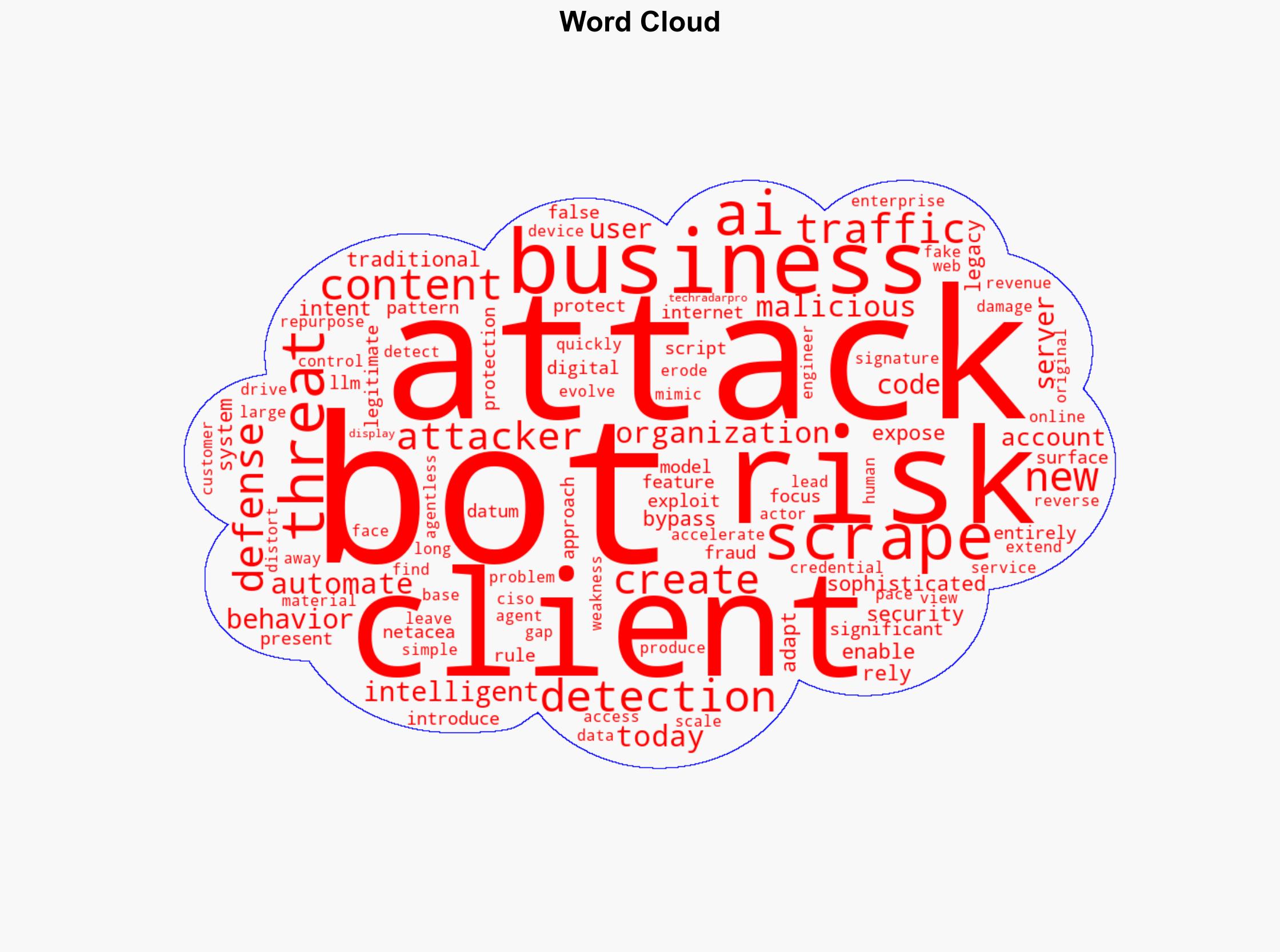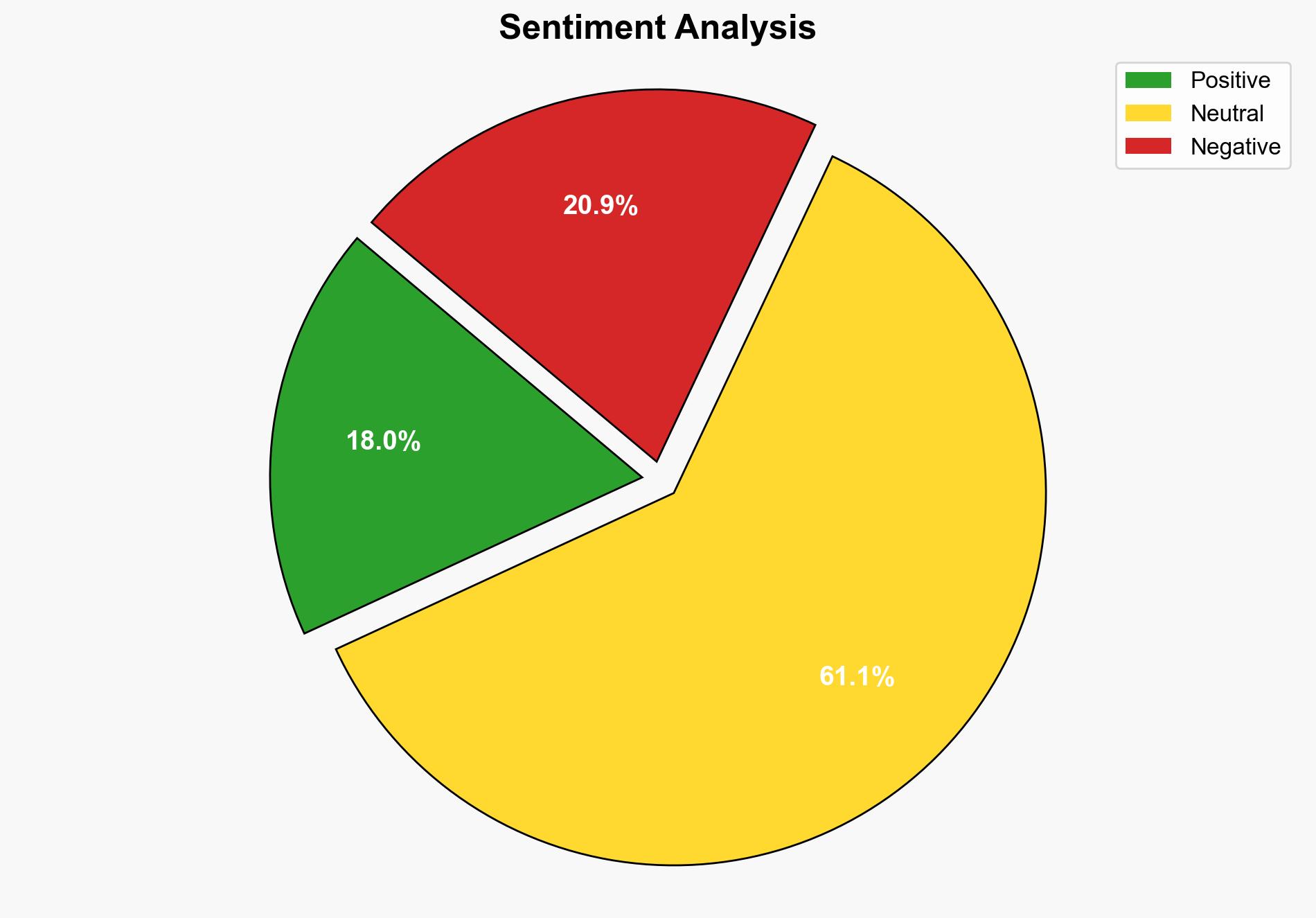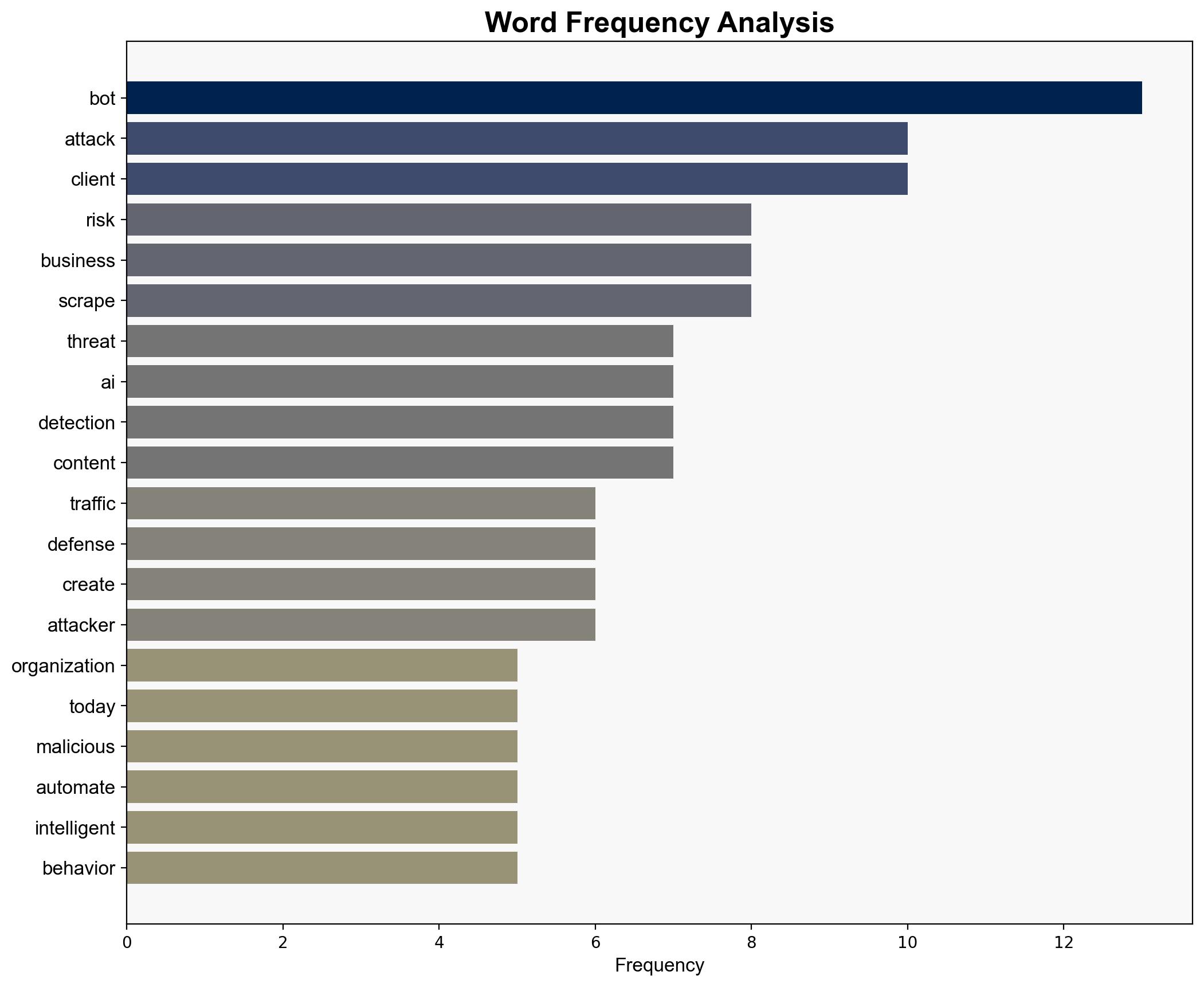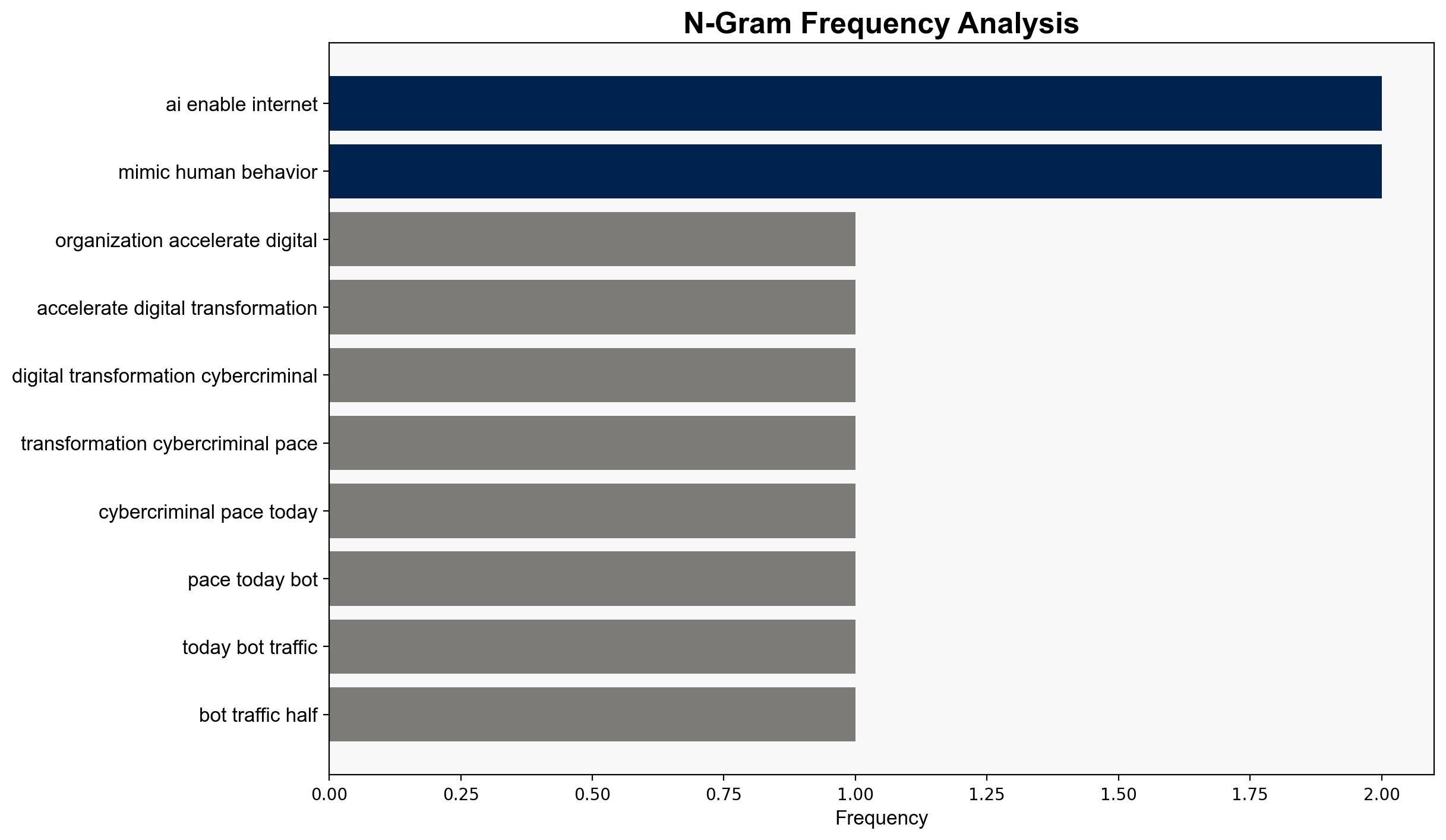Why traditional bot defenses are failing in the age of intelligent automation – TechRadar
Published on: 2025-10-22
Intelligence Report: Why traditional bot defenses are failing in the age of intelligent automation – TechRadar
1. BLUF (Bottom Line Up Front)
Traditional cybersecurity measures are increasingly inadequate against sophisticated, AI-enabled bot attacks. The most supported hypothesis is that legacy defenses fail due to their reactive nature and inability to adapt to rapidly evolving threats. Confidence Level: High. Recommended action includes adopting adaptive, AI-driven security solutions to proactively counter these threats.
2. Competing Hypotheses
1. **Hypothesis A**: Traditional bot defenses are failing primarily because they are based on outdated, reactive models that cannot keep pace with the rapid evolution of AI-driven bot attacks.
2. **Hypothesis B**: The failure of traditional defenses is due to a lack of integration between client-side and server-side detection mechanisms, leading to exploitable vulnerabilities.
Using the Analysis of Competing Hypotheses (ACH) 2.0, Hypothesis A is better supported. The source text emphasizes the adaptability and sophistication of modern bots, which legacy systems struggle to counter due to their reliance on static rules and signatures.
3. Key Assumptions and Red Flags
– **Assumptions**:
– Hypothesis A assumes that AI-driven bots can consistently bypass traditional defenses due to their adaptability.
– Hypothesis B assumes that integration issues are the primary cause of defense failures.
– **Red Flags**:
– Potential over-reliance on AI as a panacea without considering its limitations.
– Lack of specific data on the effectiveness of hybrid detection methods.
– **Blind Spots**:
– The impact of human factors in cybersecurity, such as training and awareness.
4. Implications and Strategic Risks
The rise of AI-enabled bots poses significant risks, including increased data breaches, financial losses, and erosion of trust in digital platforms. The economic impact could be severe, with increased infrastructure costs and distorted analytics affecting business decisions. Geopolitically, nations relying on digital infrastructure may face heightened vulnerabilities, potentially leading to escalated cyber conflicts.
5. Recommendations and Outlook
- Adopt AI-driven, adaptive cybersecurity solutions that can anticipate and counter evolving threats.
- Enhance integration between client-side and server-side detection to minimize vulnerabilities.
- Scenario Projections:
- Best: Rapid adoption of advanced defenses leads to a significant reduction in successful bot attacks.
- Worst: Continued reliance on legacy systems results in widespread data breaches and financial losses.
- Most Likely: Gradual improvement in defenses, but persistent threats continue to challenge organizations.
6. Key Individuals and Entities
No specific individuals are mentioned in the source text. Relevant entities include cybersecurity firms and organizations such as Netacea, which are involved in developing advanced bot defense solutions.
7. Thematic Tags
national security threats, cybersecurity, counter-terrorism, regional focus





